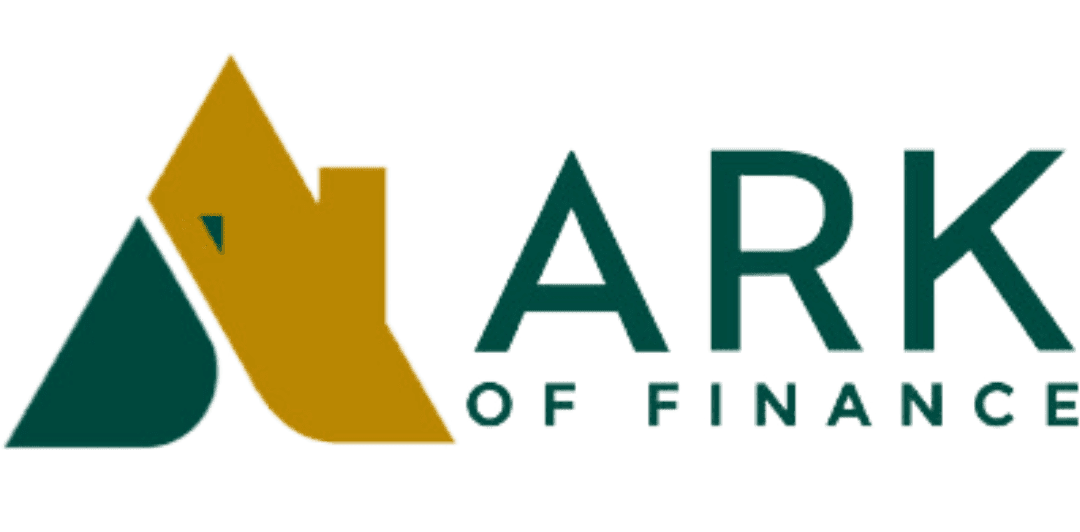Loan Process
Pre-Qualification
Step 1: Getting Prequalified
Pre-qualification is the first step in the loan process. A lender reviews your income, debts, and credit to estimate how much home you can afford. Because different loan programs have different requirements, it’s smart to get pre-qualified for each type you may be eligible for. Lenders focus on two main factors when reviewing your application:
- Ability to Repay – Based on your income, job stability, and employment history (ideally at least two years in the same field).
- Willingness to Repay
– Based on how you’ve handled credit in the past and how you plan to use the property (primary residence or rental).
Every situation is unique. If you’re weaker in one area, strength in another can balance things out. Lenders want to approve qualified borrowers—it benefits you and keeps their business running.
Mortgage Programs and Rates
Choosing the Right Mortgage Program
When choosing a mortgage, consider how long you plan to keep the home. If you expect to sell in a few years, an adjustable rate or balloon loan might be a better fit. But if you plan to stay long-term, a fixed-rate loan may offer more stability.
With so many loan options—each with different rates, fees, and terms—it can feel overwhelming. That’s where a skilled mortgage professional comes in. They can review your goals and finances to help you choose the best loan for your situation, so you can make a confident, informed decision.
The Application
Step 2: Completing the Loan Application
After pre-qualification, the next step is filling out the loan application with the help of your mortgage professional. You’ll also need to submit the required documents. A loan application isn’t considered complete until you provide the following:
- Your full name
- Your income
- Your Social Security number (plus permission to pull your credit)
- The property address
- An estimate of the home’s value
- The loan amount you're requesting
The Loan Estimate
After you submit a completed mortgage application, you’ll receive a Loan Estimate within 3 business days. This is a 3-page document that outlines the key details of your loan offer. The Loan Estimate includes:
- Estimated interest rate and monthly payment
- Total closing costs
- Estimated taxes and insurance
- Whether your rate or payments could change
- Special loan features, like prepayment penalties or negative amortization
All lenders use the same standard form, making it easier for you to compare loan offers side-by-side.
Important: Receiving a Loan Estimate does not mean your loan is approved or denied. It simply shows what terms we can offer if you choose to move forward.
The Intent to Proceed
Deciding to Move Forward
Once you receive your Loan Estimate, it’s your choice whether to move forward with us or not. If you decide not to proceed, no further action is needed.
If you do want to move forward, you must let us know—either in writing or by phone. Lenders are required to honor the terms of your Loan Estimate for 10 business days. If you wait longer than that, the terms may change based on market conditions, and you may receive a revised Loan Estimate.
Processing
Step 3: Loan Processing
Once your application is submitted, the mortgage processing begins. During this stage, the processor will:
- Order your credit report, home appraisal, and title report
- Verify your income, assets, and payment history
- Request written explanations for any credit issues (like late payments, collections, or judgments)
- Review the appraisal, purchase contract, and title report for any property concerns
After gathering and verifying all necessary information, the complete loan file is prepared and submitted to the lender for review.
Requested Documents
Step 4: Submitting Your Documents
After you complete your loan application, accept the Loan Estimate, and confirm your intent to proceed, we’ll request documentation to move forward with your loan approval. Below is a general idea of what may be required. Once you're at this stage, you’ll receive a customized checklist tailored to your specific loan.
Common Documents Needed:
- Salaried Employees: Last 2 years of W-2s and 1 month of recent pay stubs
- Self-Employed: Last 2 years of full tax returns
- Rental Property Owners: Rental agreements and last 2 years of tax returns
- Assets: Last 3 months of bank, stock, and mutual fund statements
- Retirement Accounts: Most recent IRA, 401(k), or brokerage statements
Additional Documents (if applicable):
- Cash-Out Loans: A “Use of Proceeds” letter explaining how funds will be used
- Divorce: A copy of your divorce decree
- Non-U.S. Citizens:
- Permanent residents: Copy of front and back of green card
- Non-permanent residents: Copy of valid H-1 or L-1 visa
- Home Equity Loans: Copy of your first mortgage note and deed of trust (usually found in your closing documents)
Providing these documents quickly helps speed up the approval process.
Credit Report
Understanding Your Credit and How It Impacts Your Mortgage
Most homebuyers don’t need perfect credit to apply for a mortgage—but it helps to check your credit report ahead of time. This gives you a chance to correct any errors or negative marks before applying.
What Is a Credit Profile?
A credit profile is your financial history as reported by credit bureaus. It shows how well you’ve managed debts and other obligations. It includes:
- Identifying info (name, address, etc.)
- Employment history
- Credit accounts (credit cards, loans, etc.)Public records (like bankruptcies or judgments)
- Credit inquiries
What it doesn’t include
Race, religion, income, health, political affiliation, or criminal history.
If You’ve Had Credit Issues
Be honest with your lender. If you've had financial difficulties—due to job loss, illness, divorce, or other reasons—your mortgage professional can help you write a Letter of Explanation. Lenders understand that life happens. If you've reestablished credit and have made consistent on-time payments for 12+ months, you may still qualify.
Credit Scores and Mortgage Approval
Lenders often use your FICO score (developed by Fair Isaac & Co.) to assess your creditworthiness. FICO scores are based solely on data in your credit report—not your income, savings, or down payment.
Here’s how your score is calculated:
- 35% – Payment history
- 30% – Amount owed
- 15% – Length of credit history
- 10% – New credit
- 10% – Types of credit used
What’s a Good Score?
- 680 and above – Considered “A+” credit. Fast approvals, best interest rates, and quick closings.
- 620–679 – May require more documentation. Still eligible for good rates, but underwriting may take longer.
- Below 620 – Considered “subprime.” Approval is possible, but rates are higher and options may be limited.
Note: Even with a lower score, other strengths—like strong income, large down payment, or substantial assets—can help offset risk.
How to Improve Your Credit Score
- Pay all bills on time
- Keep credit card balances low
- Close unused accounts (zero balances can still count against you)
- Review your credit report for accuracy
- Avoid applying for multiple new credit accounts at once
Final Thoughts
Credit scoring is just one part of the loan approval puzzle. Even with past credit issues, your loan may still be approved if other factors—like job stability, asset reserves, and property equity—are strong. Being proactive about your credit can improve your options and help you qualify for better terms.
Order Appraisal
Step 5: Understanding the Appraisal Process
A real estate appraisal is an expert’s estimate of a property's market value based on ownership rights. Appraisers don’t create value—they interpret current market conditions to determine what a home is worth. This includes evaluating the property’s physical condition, location, features, and recent sales in the area. Before reaching a final value, the appraiser gathers and analyzes detailed data using three standard approaches:
- Cost Approach: Estimates the cost to rebuild the home today, minus depreciation (wear and tear or outdated features).
- Sales Comparison Approach: Compares the property to recently sold homes of similar size, condition, and location—often called “comps.”
- Income Approach:
Used primarily for rental or investment properties, this method estimates value based on the income the property can generate.
For most single-family homes, the Sales Comparison Approach is the most used method.
Underwriting
Step 6: Underwriting
Once the processor gathers all required documents and verifications, your loan file is submitted to the underwriter. The underwriter reviews everything to decide if the loan meets the lender’s guidelines.
- If more details are needed, the file is placed in “suspense,” and you’ll be asked to provide additional information.
- If everything checks out, the loan is approved and moves on to the next stage of the process.
Closing Disclosures
Step 6: Closing Disclosure
The Closing Disclosure is a 5-page document that outlines the final details of your mortgage loan. It includes your:
- Loan terms
- Estimated monthly payments
- Total closing costs and fees
By law, we must give you this form at least three business days before your scheduled closing. This gives you time to:
- Review and compare it with your original Loan Estimate
- Ask any questions
- Make sure everything is accurate before signing at the closing table
Closing
Step 7: Closing and Funding
Once your loan is approved, the file is sent to the closing and funding department. They notify the broker and closing attorney, confirm all fees, and coordinate a closing appointment for you to sign the final loan documents. At your closing appointment, you should:
- Bring a cashier’s check (or arrange a wire transfer) for your down payment and closing costs. Personal checks are usually not accepted and may delay closing.
- Review all final documents to confirm your loan terms, interest rate, and personal information are correct.
- Sign the loan documents.
- Bring valid ID and proof of homeowner’s insurance.
After signing, the attorney sends the documents back to the lender. Once everything is verified, the loan is funded, and the attorney records the mortgage and deed of trust with the county to complete the process.
Summation
How Long Does the Mortgage Process Take?
A typical “A” credit mortgage can be completed in 14 to 21 business days. Thanks to automated underwriting systems, the process is now faster than ever. Ready to get started? Contact one of our experienced Loan Officers today to discuss your options, or apply online and we’ll reach out to you promptly!


